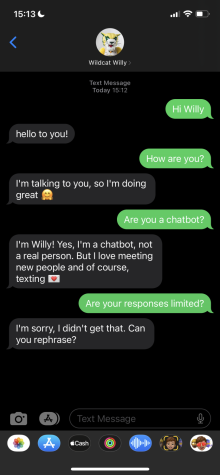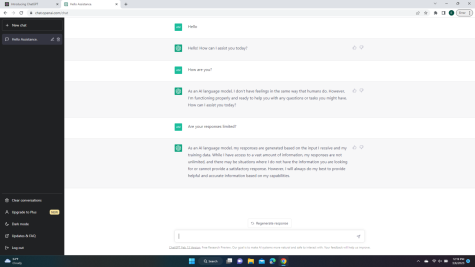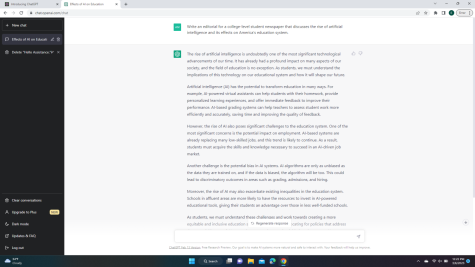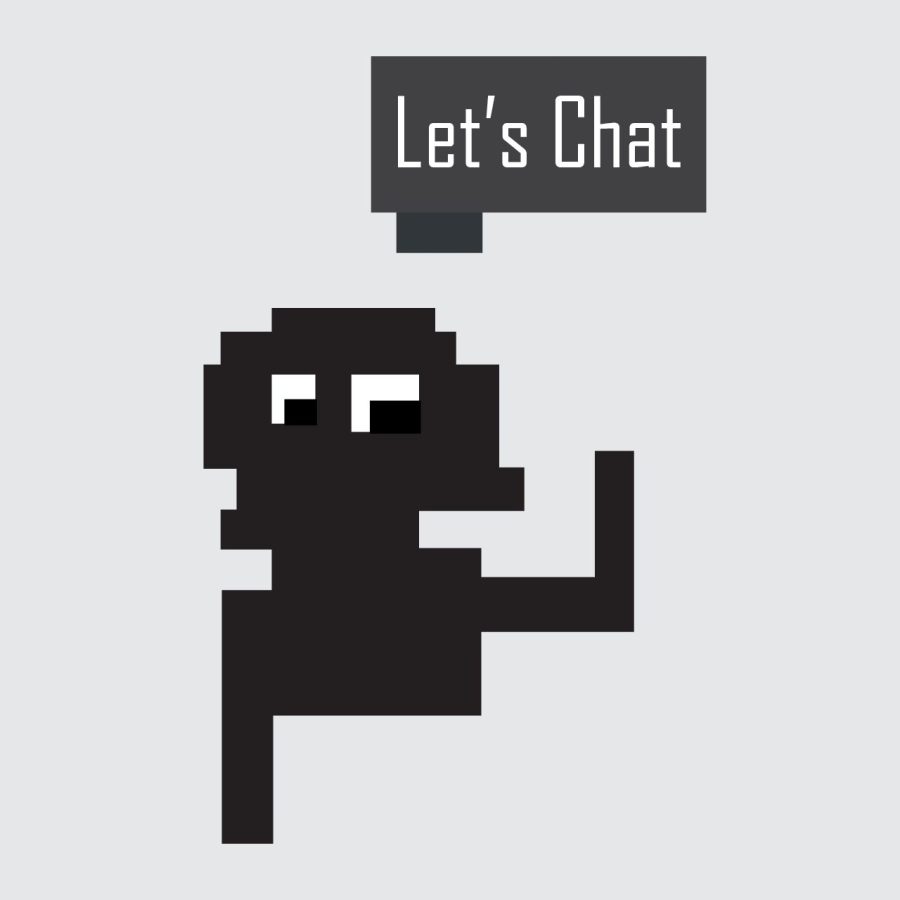Editorial — Embracing innovation in education with ChatGPT
How can we use artificial intelligence to our benefit in college?
March 16, 2023
A recent hot topic in the educational world has been artificial intelligence (AI), particularly that of ChatGPT, and its potential to heighten levels of cheating and plagiarism at all levels of schooling.
The rise of highly advanced AI chatbots has been on the horizon for quite some time, with most of the technology we interact with daily being automated or programmed to respond in a certain manner. However, those chatbots are relatively limited in their response to prompts, most often being designed to only complete certain tasks.
For instance, NMU recently debuted a chatbot under the guise of the school mascot Wildcat Willy. From time to time, students will receive messages from Willy that require a very limited response — usually a numbered list of pre-written answers that students must choose from. Based on the student’s selection, Willy will instantly respond with a pre-designed message that correlates with the selected answer.
However, Willy can still operate outside of this framework, but only to a certain extent. Here is an example of a conversation that was initiated by a student with the Wildcat Willy chatbot:

This is where the Wildcat Willy chatbot differs from ChatGPT. The new chatbot from OpenAI rarely flounders when asked a question, no matter the level of difficulty or analytical skills required for a human to do the same.
So, how exactly does it work? According to the New York Times, ChatGPT operates “by making probabilistic guesses about which bits of text belong together in a sequence, based on a statistical model trained on billions of examples of text pulled from all over the internet.”
To demonstrate its intelligence, we asked ChatGPT the same thing we asked Wildcat Willy. Here is its response:

To further flaunt the chatbot’s skills, we asked it to write an editorial for a college-level student newspaper that discusses the rise of artificial intelligence and its effects on America’s education system. Here is its response:

This may seem scary. A non-sentient being has the capabilities to not only do our homework but may also take the job that we have been spending the past several years studying to obtain.
Yes, technological innovation can be scary, especially when we do not fully comprehend its capabilities. But rather than fight the inevitable use of AI in educational settings, we should work to better understand the AI chatbot, embrace its capabilities and manipulate it to work in our favor.
Of course, this will not happen overnight. But as we continue to learn more about ChatGPT, let us take a look at our current education system, why ChatGPT is so threatening to it and how we can evolve as both educators and students by using AI.
The current education system in America, particularly that of the collegiate level, was built for a very specific kind of learner. Consider a majority of the classes you have taken at Northern. You were likely assigned a textbook that was to be read outside of class periods, and while in class you were required to sit still and attempt to absorb a lecture. Additionally, most of the major assignments required a substantial bit of writing, which was likely research-based.
Essay writing is a great skill to have, but it is also a learned skill that must be thoroughly taught to be effective. Most professors just assume that students know how to structure long essays and research papers, which is untrue. Therefore, ChatGPT provides a nice alternative for students who either do not have the time to conduct a lengthy amount of research or are unable to easily translate their thoughts to paper.
Consider this: if ChatGPT can easily produce our homework, is enough critical thinking being asked of us as college students?
ChatGPT is telling us that the current way we are operating in the classroom needs to change, particularly when it comes to discussion and participation-based courses. According to a recent study published by the Journal on Excellence in Public Teaching, “more than 70% [of students] drew a positive connection between their own participation in discussion-based learning and success in their classes.”
We learn more when we connect with others, have open conversations and apply large concepts to the real world.
So, while hard skills like essay writing and research should continue to be taught, present them in a way that requires in-class engagement. Instead of just assigning large papers that are due by the end of the semester, walk students through every step of the writing process so they do not feel the need to have ChatGPT do it for them.
ChatGPT is not the first innovation in technology that has directly affected the classroom, causing teachers and professors to fear the end of schooling as they know it. When hand-held calculators first debuted in the late 1960s, educators thought that the study of math had come to an end.
But rather than cower in fear from the calculator’s advanced capabilities, we learned to evolve lesson plans and use advanced calculator programs to challenge students. Calculators simplified pages-long mathematical equations to the click of a few buttons but retained the formulaic complexity required of students to learn.
What makes ChatGPT, or AI in general, any different?
ChatGPT is daunting, we get it. But there seems to be no end in sight for its educational use. Banning the program in its entirety is not going to stop issues of plagiarism and cheating, which will continue to run rampant at all levels of education no matter the student codes of conduct. So rather than prolonging the rise of ChatGPT, get ahead of the curve and start learning the intricacies of the chatbot now.
Editor’s Note: The North Wind is committed to offering a free and open public forum of ideas, publishing a wide range of viewpoints to accurately represent the NMU student body. This is an editorial, written by the North Wind Editorial Board in its entirety. It reflects the majority views of the individuals who make up the editorial staff of the North Wind. It is the policy of the Editorial Board not to endorse candidates for any political office, in order to avoid aligning this public forum with particular political organizations.


























